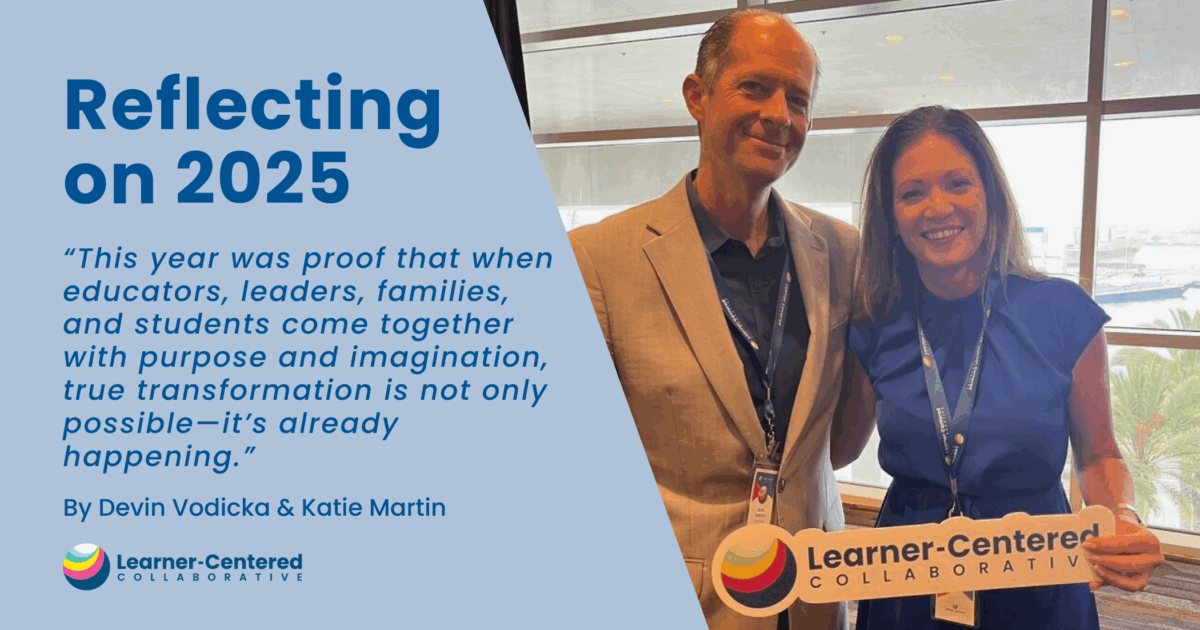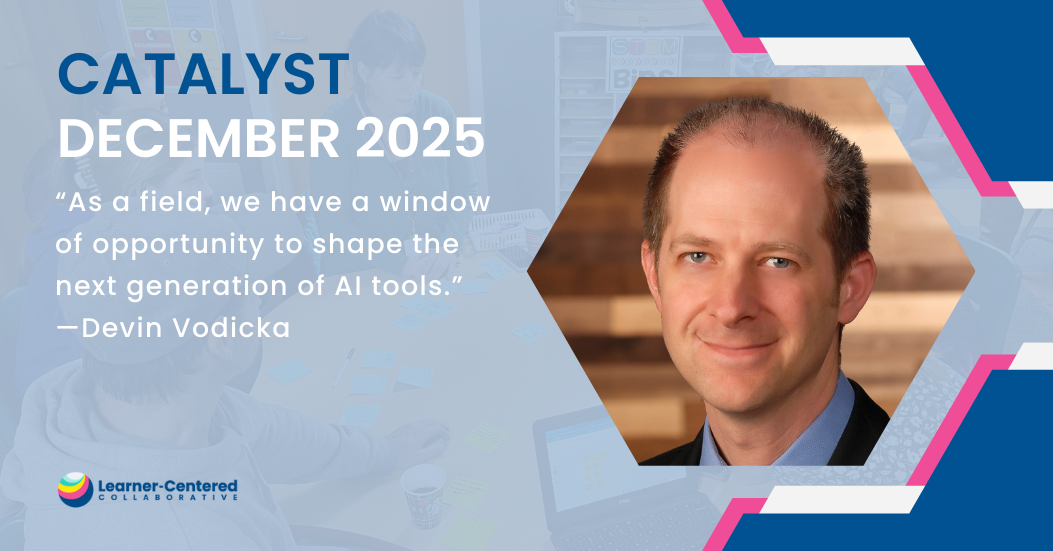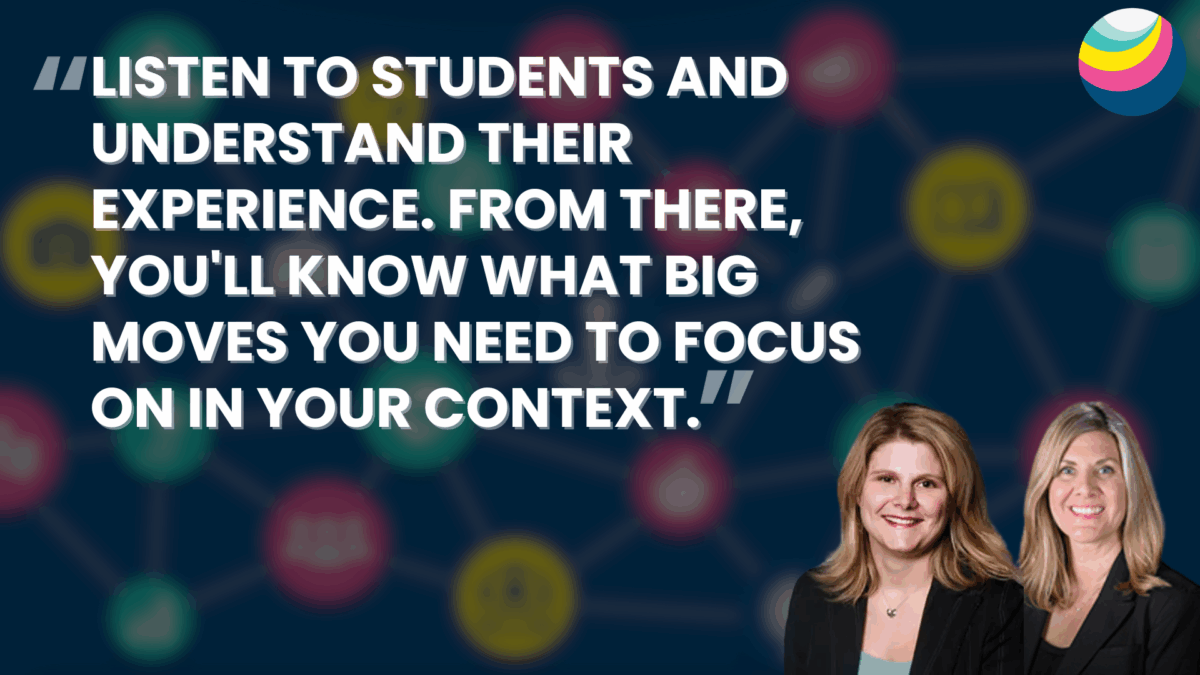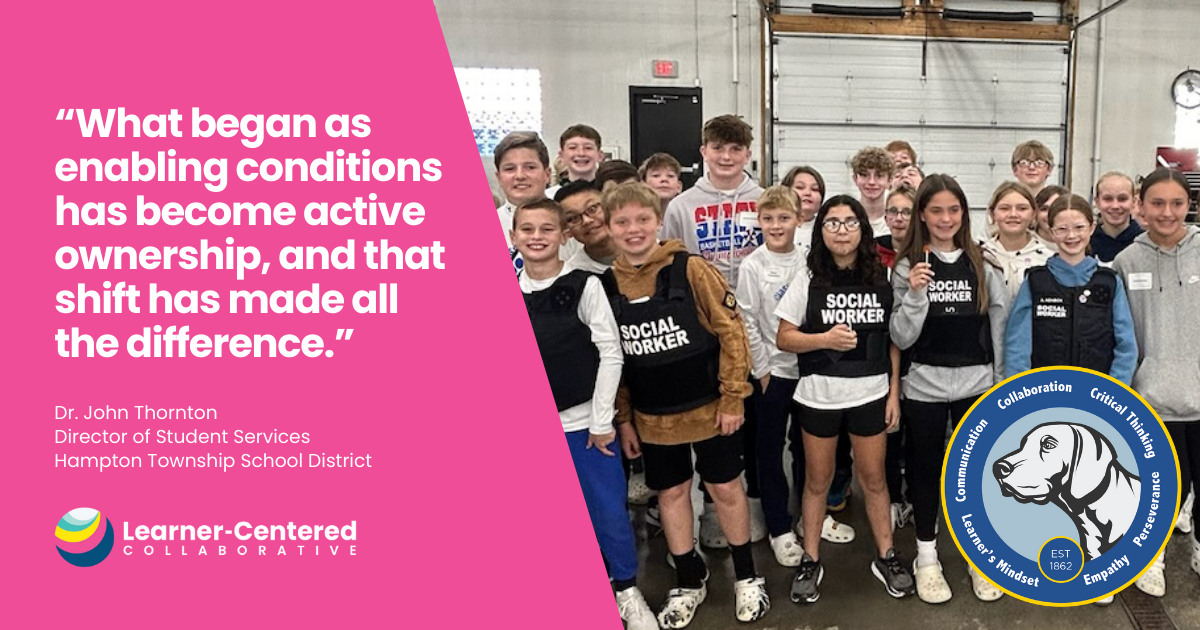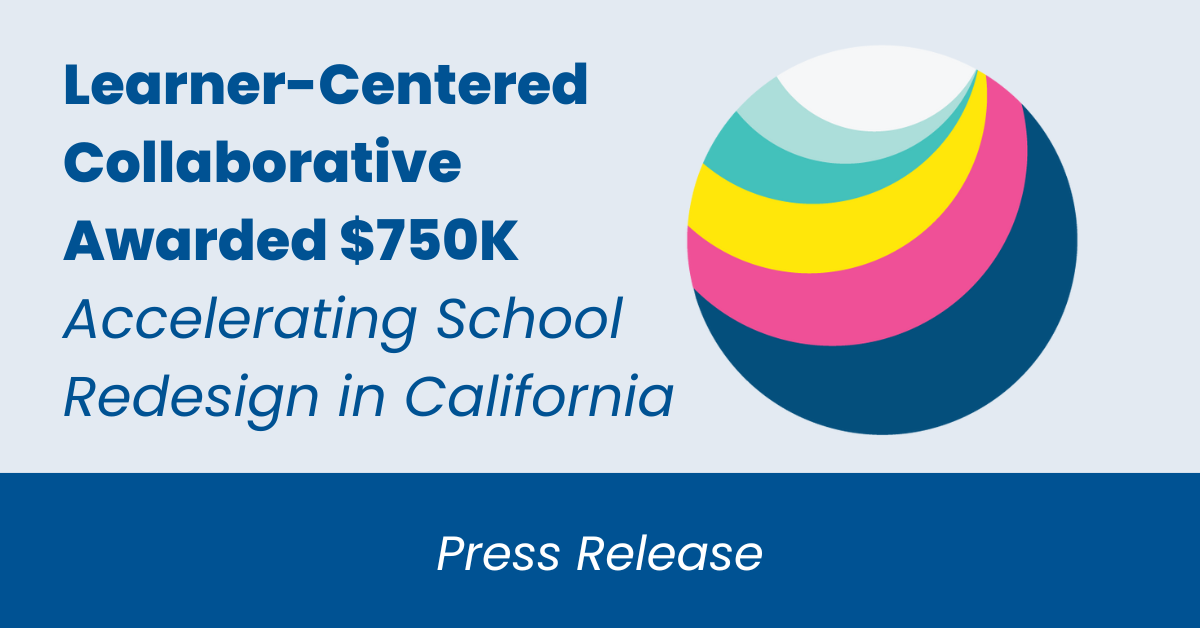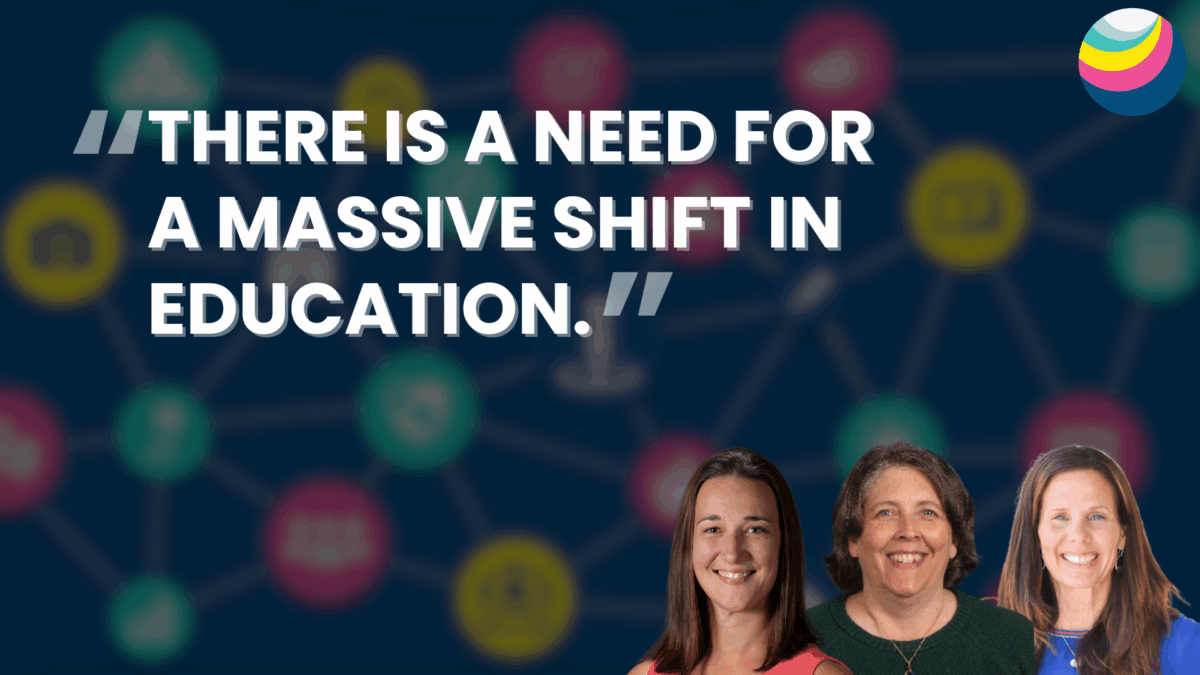It’s Time for a Change Management Model Built for Learner-Centered Education
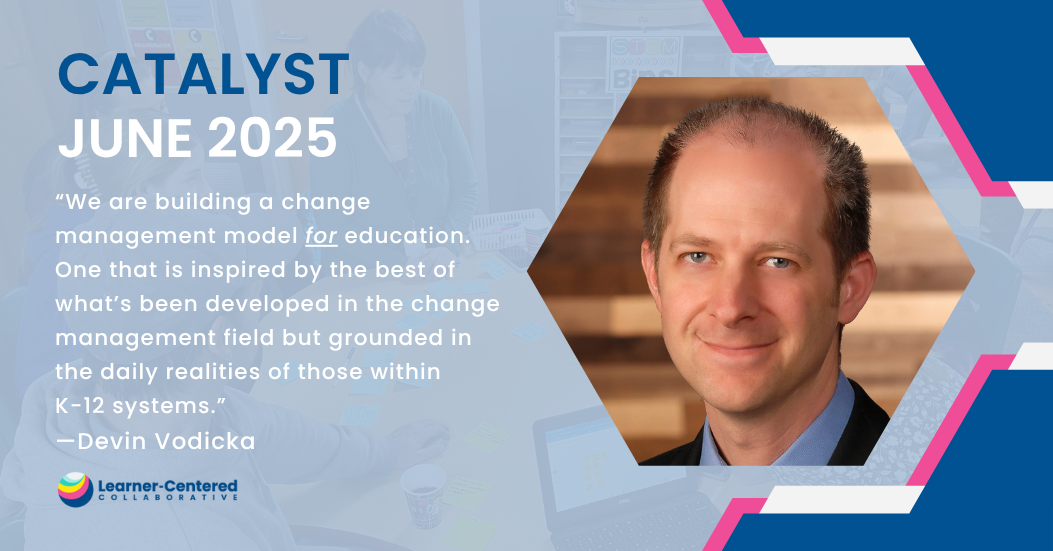
How often have we heard learners (adults included) ask, “Why do I need to know this?” It’s a question as old as formal education itself, and one we should never stop thoughtfully addressing. The likelihood of achieving our desired outcome diminishes when the “why” is unclear in any context. This is just as true when helping students master arithmetic as it is when shifting an entire system toward learner-centered structures. The scale of the initiative doesn’t change the core equation:
Specific Collective Goal + Strong Collective Why = Greater Potential for Lasting Change
This is especially evident in the realm of change management, where the “why” often takes shape through a vision statement. Yet, we’ve all encountered vision statements that fail to translate into practice. Does that mean vision statements are ineffective? Or that the “why” doesn’t matter? Absolutely not.
At Learner-Centered Collaborative, we believe every school or district change journey should start with establishing a vision and mission statement along with a core set of values. How we create these statements is the important question. Before we put pen to paper, we must also articulate a path—a theory of change—that brings the vision to life.
Read More: Framework for the Future: A Catalyst for Coherence and Collective Efficacy
What Theory of Change is Guiding Your Change Journey?
Every change effort operates from a theory of change, whether that theory is explicit or not. In many traditional systems, that theory often defaults to compliance: top-down mandates, siloed decisions, and minimal engagement from those most impacted. While this may feel efficient in the short term, it rarely leads to lasting or meaningful outcomes. Outcomes aside, that approach can quickly become normalized and unconsciously guide how decisions are made for years to come. Unless it is intentionally brought back to the surface for reflection and interrogation.
My Co-CEO, Katie Martin, poses a guiding question that helps reframe the change management conversation: “Are your systems designed for people to comply and implement your programs, or are they designed to empower people to learn, improve, and innovate?”
If we want the latter to be true, then our theory of change must also reflect it. That’s why we emphasize frameworks like Kotter’s Dual Operating System and Bridges’ Transition Model. These aren’t just abstract theories—they’re tools to help us build change processes that are inclusive, adaptive, and grounded in the lived experiences of the people we serve. They help unify diverse stakeholders around a shared purpose and create space for collective learning, agency, and innovation.
These models offer critical insight into how people experience and navigate change. They help us move away from rigid, mechanistic approaches and toward adaptive, people-centered processes. But we must also name an important truth: these models weren’t built with public education in mind.
Public education is a uniquely complex ecosystem. Unlike corporate environments, education leaders are accountable not only to internal teams but to elected boards, local governments, state mandates, federal regulations, unions, parent coalitions, and advocacy organizations. Change in this context is never just technical—it’s relational, emotional, and political.
That’s why, at Learner-Centered Collaborative, we believe it’s time for something new.
Building a New Change Management Model
We are building a change management model for education. One that is inspired by the best of what’s been developed in the change management field but grounded in the daily realities of those within K-12 systems. A model that doesn’t just acknowledge the political nature of education but equips leaders to navigate it with integrity. A model that doesn’t treat change as linear or top-down, but as a dynamic, community-centered process that prioritizes relational trust, collective efficacy, and a learner-centered mindset.
We’re not starting from scratch. We’re drawing on lived experiences from across the country—stories of what’s working, what’s possible, and where traditional models fall short. We’re layering in frameworks that account for emotional readiness, community engagement, and systems coherence. And we’re co-constructing this model with the educators, leaders, and learners it’s designed to support.
If you want to be among the first to access the framework when it’s ready and receive updates as we share insights along the way, sign up here.
